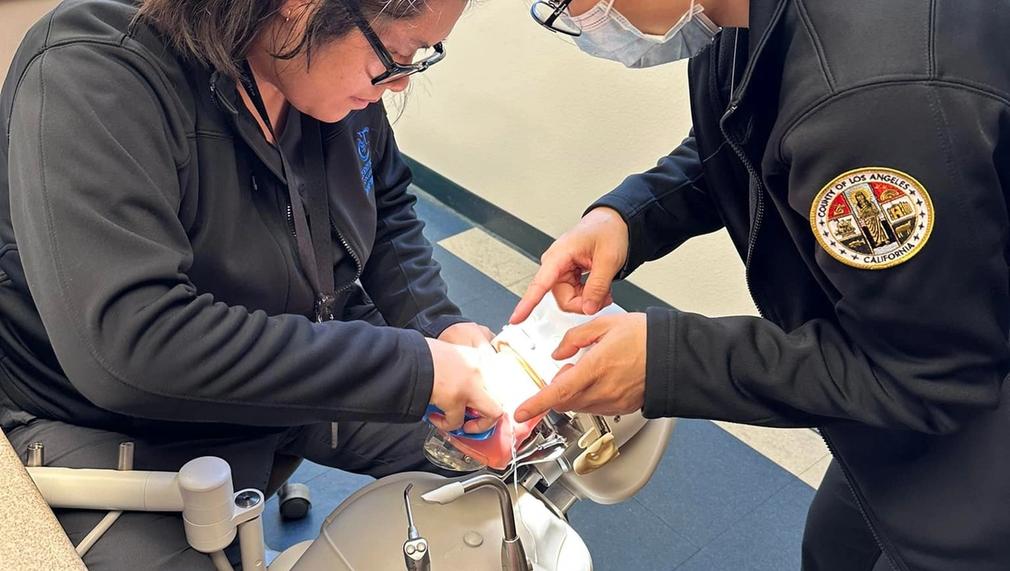Career Technical Education (CTE) College Pathway to Economic Prosperity
Help underserved and underrepresented CTE students gain valuable skills and credentials that lead to high-demand careers by eliminating the hidden cost of CTE programs and creating pathways to economic prosperity.

What is the primary issue area that your application will impact?
Youth economic advancement
In which areas of Los Angeles will you be directly working?
Gateway Cities
In what stage of innovation is this project, program, or initiative?
Expand existing project, program, or initiative (expanding and continuing ongoing, successful work)
What is your understanding of the issue that you are seeking to address?
While community colleges are more affordable than 4-year universities, many people do not understand the mandatory costs of participating in highly technical CTE programs.Low-income and underserved students seek CTE programs to learn a trade and gain employment, yet hidden costs can deter them from completing their studies. Financial obstacles negatively impact access to CTE programs, enrollment, persistence, and completion rates. Cerritos College serves over 94% of minoritized students who are historically underrepresented in higher education (i.e., first-generation, low-income, and women) and is a Hispanic Serving Institution. Latinos are projected to comprise 30% of the nation’s workforce by 2050, doubled from 2010 (U.S. Department of Education, 2020). Therefore, it is imperative to invest in workforce development programs that support this population and help mitigate the high costs of CTE programs by providing financial assistance to ease their burden.
Describe the project, program, or initiative this grant will support to address the issue.
The CTE College Pathway to Economic Prosperity program is designed to alleviate some of the hidden costs of CTE programs by providing financial assistance to students in need by defraying expenses such as tools, uniforms, dental instruments, and certification exams. Recent cuts to federal educational programs make it more crucial to support college students by staying in school and completing their education. By doing so, we can increase their chances of securing higher paying jobs. A current student highlights the importance of this initiative: “Expenses relating to the dental hygiene program include instrument kits and other equipment, which run about $4,000 per semester. A scholarship to help cover the costs of these items would help tremendously.” Another student who received aid for tools said it helped him get closer to reaching his goal of becoming an auto technician. This program not only addresses the immediate financial burdens of students but also contributes to the long-term economic prosperity of LA County by ensuring they complete their education and enter the workforce with the necessary skills and qualifications. By investing in these students, we are investing in the future of our community. This grant is a vital step in supporting underserved students and ensuring they have the resources to succeed in their educational and career pursuits.
Describe how Los Angeles County will be different if your work is successful.
Cerritos College serves several densely populated, predominantly Latino communitiessuch as Bell Gardens, Hawaiian Gardens, Norwalk, and South Gate, where educational attainment and income levels are below the LA County average. Many residents face financial barriers to college access and completion. This initiative aims to improve student retention and graduation, building a more diverse, skilled, and higher-earning workforce. In turn, this will expand LA County’s tax base and address labor shortages in high-demand sectors. According to the Los Angeles Center of Excellence for Labor Market Research (2024), Cerritos College contributes over $537 million annually to the local economy. Student spending supports 146 jobs, and alumni earnings, over $378 million, support more than 4,200 jobs. Most students and alumni live and work in the region, making them active contributors to the county’s economic growth. This program will reduce affordability barriers and drive long-term impact.
Approximately how many people will be impacted by this project, program, or initiative?
Direct Impact: 51
Indirect Impact: 850